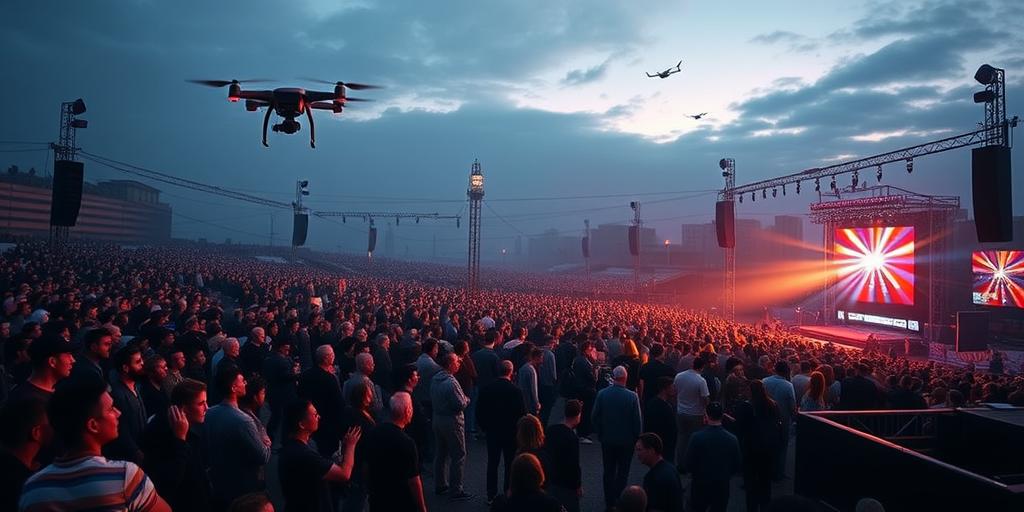Safety and Security at Live Events in 2025: A Look Ahead
The landscape of live events is constantly evolving, and with it, the challenges and strategies for ensuring the safety and security of attendees. As we look ahead to 2025, several key trends and technologies are poised to reshape how event organizers approach these critical aspects.
Key Trends Shaping Event Safety in 2025
- Advanced Surveillance Technologies: Expect wider adoption of AI-powered video analytics for real-time threat detection. These systems can identify suspicious behavior, monitor crowd density, and alert security personnel to potential incidents before they escalate.
- Enhanced Cybersecurity Measures: As events become more digitally integrated, protecting against cyber threats is paramount. This includes securing ticketing systems, Wi-Fi networks, and mobile apps to prevent data breaches and disruptions.
- Improved Communication Systems: Reliable and redundant communication networks are essential for coordinating security teams and disseminating information to attendees. Look for increased use of mesh networks and satellite communication systems to ensure connectivity even in congested environments.
- Biometric Authentication: Biometric technologies like facial recognition and fingerprint scanning will become more common for access control, verifying attendee identities and preventing unauthorized entry.
- Drone-Based Security: Drones equipped with cameras and sensors can provide aerial surveillance, monitor crowd movement, and assist in search and rescue operations. They offer a valuable tool for enhancing situational awareness and responding to emergencies.
Strategies for Enhancing Event Security in 2025
- Comprehensive Risk Assessments: Conducting thorough risk assessments is the foundation of any effective security plan. These assessments should identify potential threats, vulnerabilities, and the likelihood of various incidents occurring.
- Collaboration with Law Enforcement: Building strong relationships with local law enforcement agencies is crucial for sharing information, coordinating resources, and ensuring a rapid response to emergencies.
- Training and Preparedness: Security personnel must be well-trained in de-escalation techniques, emergency response procedures, and the use of advanced security technologies. Regular drills and simulations can help ensure they are prepared to handle a variety of scenarios.
- Data Analytics and Predictive Policing: Analyzing historical data and real-time information can help identify patterns and predict potential security risks. This allows event organizers to deploy resources proactively and prevent incidents before they occur.
- Public Awareness Campaigns: Educating attendees about safety procedures and encouraging them to report suspicious activity can significantly enhance overall security. Clear and concise communication is essential for fostering a culture of safety.
The Role of Technology
Technology will continue to play a pivotal role in event safety and security. Here are some specific technologies to watch:
- AI-Powered Security Cameras: These cameras can automatically detect and classify objects, identify suspicious behavior, and send alerts to security personnel.
- Wearable Sensors: Wearable devices can monitor the vital signs of attendees, providing early warning of medical emergencies. They can also track the location of staff and security personnel, improving coordination and response times.
- Virtual Reality Training: VR simulations can provide realistic training scenarios for security personnel, allowing them to practice responding to various emergencies in a safe and controlled environment.
- Blockchain Technology: Blockchain can be used to secure ticketing systems and prevent fraud, ensuring that only authorized individuals gain access to events.
Conclusion
As we move closer to 2025, the safety and security of live events will remain a top priority. By embracing new technologies, implementing comprehensive security strategies, and fostering a culture of vigilance, event organizers can create safer and more enjoyable experiences for all attendees. The key is to stay informed, adapt to evolving threats, and prioritize the well-being of everyone involved.
